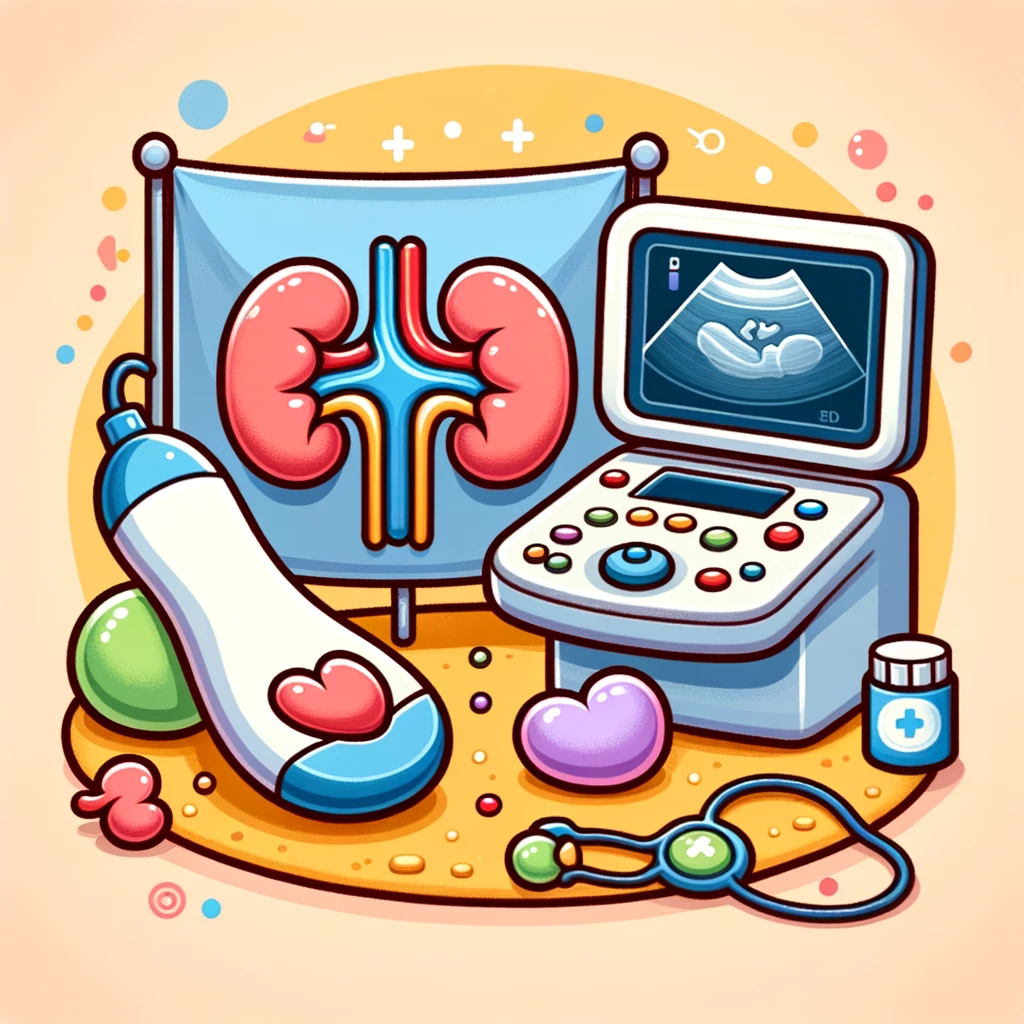Ultrasound
- First-line imaging modality for most suspected anomalies of the urinary tract
- Compare the patient’s renal length with tables of normal renal length vs age
- Left and right kidneys should normally be within 1 cm of each other in length.
- Discrepancy due to too small kidneys:
- Global scarring
- Discrepancy due to too large kidney:
- Acute pyelonephritis
- Renal duplication
- Discrepancy due to too small kidneys:
Different characteristics of infants kidneys compare to older children and adults includes:
- Undulating contour secondary to persistent fetal lobulation (columns of Bertin)
- More echogenic (can be iso or hyperechoic to adjacent liver parenchyma)
- Thinner renal cortex
- Prominent renal pyramids and hypoechogenicity compare to the renal cortex → can be mistaken for cysts or dilation of the collecting system.
Voiding Cystourethrogram (VCUG)
Strength
- Can demonstrate presence or absence of vesicoureteral reflux (VUR)
- Demonstrate anatomic abnormalities of the bladder and urethra
Indication includes:
- Evaluation of urinary tract infection (UTI)
- Voiding dysfunction
- Enuresis
- Work-up for hydronephrosis
Procedure
- 8F urinary catheterization
- Precontrast scout view of the abdomen
- Evaluate calcifications
- Bowel wall pattern
- Confirm catheter position within the bladder
- Bladder contrast filling via catheter
- Early filling view to exclude a ureterocele
- Full contrast bladder: bilateral oblique views to visualized ureterovesical junctions (UVJ)
- Voiding
- Include urethra in imaging (especially for male)
- Can be obtained with the catheter in the urethra (does not prevent the diagnosis of posterior urethral valves)
- Complete void
- Imaging of VUR and postvoid residual contrast within bladder and renal collecting systems
Dose reduction techniques
- Use “last-image hold images” instead of true exposures
- Brief and intermittent fluoroscopy during bladder filling
Expected bladder capacity
The amount of contrast needed to fill a child’s bladder can be calculated using the following formula:
Expected bladder capacity (in mL) = (age (in year) + 2)x 30
Nuclear Medicine
99mTc-DMSA
Can be used to evaluate
- Relative renal function (right vs left)
- Renal cortical defects
- Infection
- Infarction
- Scarring
99mTc-MAG3
- Primary active tubular excretion
- Used in suspected urinary tract obstruction (with a furosemide challenge)
Magnetic Resonance Urography (MRU)
Increasingly utilized, yet constrained by its cost, availability, and the requirement for sedation.

Leave a Reply